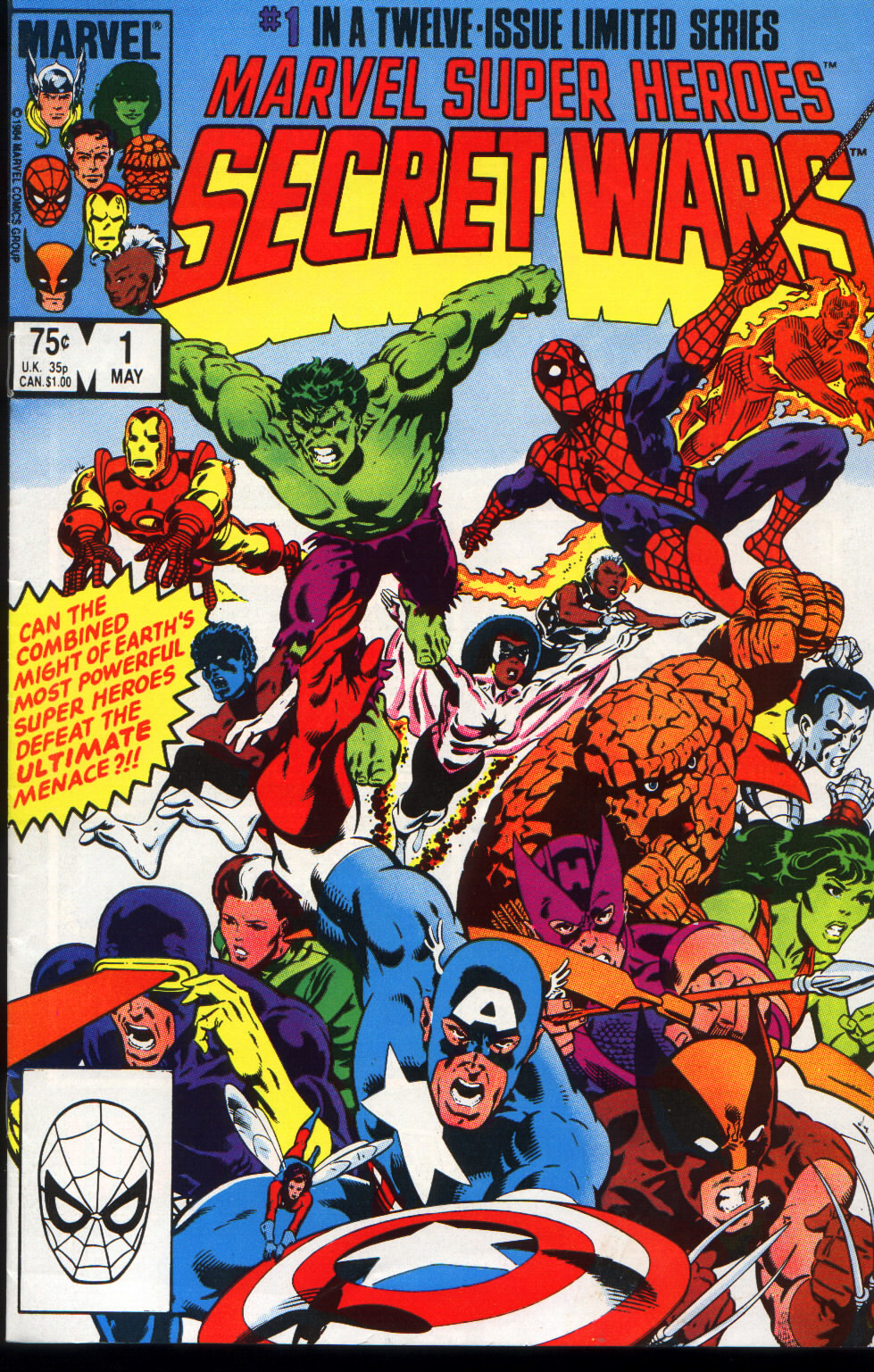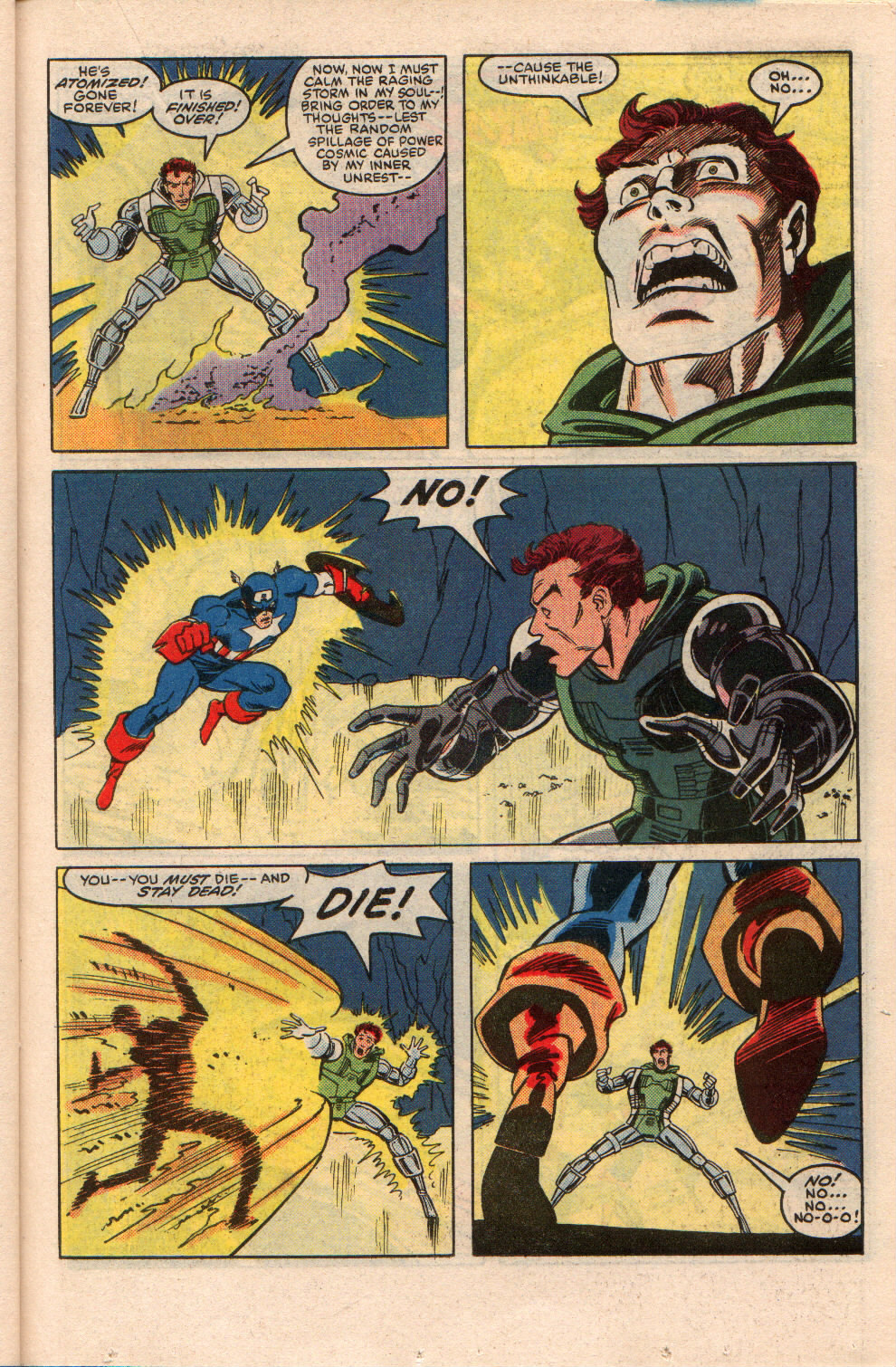Marvel at 80: Secret Wars
Eighty years.
It’s been eighty years since Marvel Comics #1 was published back in 1939. While far from the first superhero comic ever released, Marvel Comics #1 was the first of many stones that would eventually build the fortress that is now the company of Marvel Comics. Along the way, Marvel would come up with the idea of shared universal comics, characters crossing over being no big deal, and even the primary purpose of comics published to show off people crossing over as a big storyline.
Or maybe DC came up with it. Stories vary, and comics were pretty cutthroat back in the day.
Either way, with War of the Realms coming out as Marvel’s 80th anniversary event, we figured it couldn’t hurt to look back at some of Marvel’s more significant events to see where the trend of “nothing will be the same” events came from, as well as see if those events really stand the test of time. Marvel’s modern events only came about in 1984, so we’re going to be skipping things like The Kree/Skrull War or The Avengers/Defenders War. Frankly, this still gives us almost 35 years of events to pick through, so there’s a lot of fun stuff coming in the future.
Buckle up, true believers, as we travel back to 1984 and experience the thrills of Secret Wars!
It was 1983, and the action figure line He-Man was huge. The company Mattel owned He-Man and was proud of the sales the TV show at the time was generating. However, they also noticed that superheroes were a pretty decent figure seller for their competition at Kenner, who owned DC and were running their own Super Powers line of action figures with that license. Not wanting to put all their eggs in one basket, Mattel approached Marvel to see about getting their foot in on the comic hero dollars. There was just one catch, though.
Mattel wanted a comic line to stir up interest in Marvel’s heroes and advertise those figures.
Jim Shooter, Editor in Chief of Marvel at the time, had just the plan. Younger fans he’d met at conventions would always ask for a comic for a comic where “one big story with all the heroes and all the villains in it.” While he’d proposed an idea for Cosmic Champions, Mattel had done marketing research with their target audience and found out they loved the word “Secret” and War. In March of 1984, the comic Marvel Age announced the story "Secret Wars" and the rest is history.
Mattel would have some other feedback to make the comic and toys tie in closer together, though. Doctor Doom looked too medieval, and his look would need to be updated to look more futuristic. Iron Man too. Mattel also wanted playsets and vehicles, so whatever Marvel could throw in would work fantastically for toy sales. Jim Shooter nodded his head and kept running with the suggestions since it could only help both companies involved.
The action figure themed background is almost incredibly fitting for Secret Wars. The whole plot is that this being called the Beyonder has gathered up heroes and villains from all across the planet Earth, and thrown them into a big playset to make them fight until one side has come out on top. The biggest names of Marvel in the 1980s were all thrown together, like the X-Men, the Avengers, the Fantastic Four, and everyone’s favorite wall-crawler Spider-Man. Many famous villains at the time were also included but had fewer connections between one another.
Most of the heroes would be sucked out of their books and onto Secret Wars’ Battleworld, only to be spat out next issue with drastic changes. Almost every book had some change like Spider-Man has a new costume, the Fantastic Four switching losing the Thing but gaining She-Hulk, or even Colossus no longer being in love with Kitty Pryde. While modern event comics take place concurrently with the original comics, Secret Wars instead would slowly unfold throughout a year and explain what happened during the days between the two comics. DC would later use this idea for the much more ambitious story 52 a few decades later.
Except for poor Cyclops, who was drawn from his honeymoon and retirement, only to be dropped back in Tahiti without warning.
Jim Shooter himself would pen Secret Wars, for better or worse. While his writing talents help make sure the comic hold up as a stand-alone story, the man couldn’t help but work in a few of his pet projects. A minor villain that Shooter had taken a shine to, the Molecule Man, would be brought in as a significant player for the event, and would even gain a girlfriend through new character Volcana. Jim Shooter would also create new characters Spider-Woman (the Jessica Drew incarnation) and Titania. Indeed, the only real flaw of the event is that Jim Shooter’s Silver Age comic origins as a writer would be on display as characters would often state their feelings aloud rather than through their actions.
The story also meanders a little, perhaps because Jim Shooter bent over backward to make this story work with Mattel’s request. The X-Men form their sub-faction with Magneto for a while, thanks to Jim Shooter’s take on the X-Men being remarkably paranoid. The blue-collar villains work together, and pal around in ways that are genuinely charming, while the heroes distrust and have people issues. As a result, its split almost into three significant stories: Heroes vs. Villains, Heroes vs. Galactus, and everyone vs. Doom.
While the big smash-ups are downright enjoyable, and the Galactus chapter is excellent for the time, it’s the final segment that everyone remembers. Doom, having stolen the powers of the godlike Beyonder, has taken over Battleworld and tries to be a benevolent ruler. However, the forces are just too much for him, with Doom’s subconscious wreaking havoc on his attempted rule and assisting the heroes. Eventually, the Beyonder would steal his powers back, and the Secret Wars of Battleworld would be over.
While the plot may have meandered about, the art was pretty iconic and impressive. Mike Zeck would provide the pencils for all but issue 5, where Bob Layton would step in. John Beatty inked every chapter, with Jack Abel and Mike Esposito helping out for issue 7. Christie Scheele provided colors, with Nelson Yomtov filling in on Chapter 11. Joe Rosen would work on every segment as the letterer. As you can see from the panels snipped from earlier in the article, every page is stable and snappy. Solidly Marvel’s House Style from the era, every character looks wonderfully iconic and in their best form.
Secret Wars has left a powerful mark on Marvel. Not only was it the starting point for the line of Marvel’s modern events, but tons of things would erupt from Secret Wars down the line. John Byrne would leave Ben Grimm on Battleworld for a few years, resulting in some genuinely bizarre tales featuring Rocky Grimm: Space Ranger. She-Hulk would become a lasting cast member of the Fantastic Four, and one of the more well-known replacement members of the team. Dead at the time, Doctor Doom would also be resurrected thanks to the events of Secret Wars to justify why he was alive at the time of the story. Magneto’s reveal as a technical good guy would eventually play out with him taking over as headmaster of the Xavier School for Gifted Youngsters inUncanny X-Men #200. Perhaps the biggest, of course, was the reveal that Spider-Man’s new costume was an alien symbiote, which eventually evolved into Venom. A lot of excellent plot ideas for Marvel in the 80s and 90s began with Secret Wars.
As for Marvel’s events, well, it wouldn’t be long for another to show up. Jim Shooter would want to do Secret Wars II just a year later (which we’ll cover next), and Marvel would experiment with a lot of formats before coming up with just the right formula to maximize sales and story potential.
In all, Secret Wars is worth reading for the spectacle and bizarre nature of the comic. It’s hard to believe that Marvel would put out a year-long toy ad when cartoons and movies do so much a better job advertising their toys. In a way, it’s just as fascinating as those weird Hostess comic ads, where everyone seems in character, but everything is just entirely off enough that nothing makes a lot of sense.
Confusing, strange, and a little silly, Secret Wars laid a lot of the groundwork for Marvel’s biggest smash-ups in the future, and it’s worth looking into for that alone. The next event, though, wound up setting up a lot of the worst aspects of event comics.










